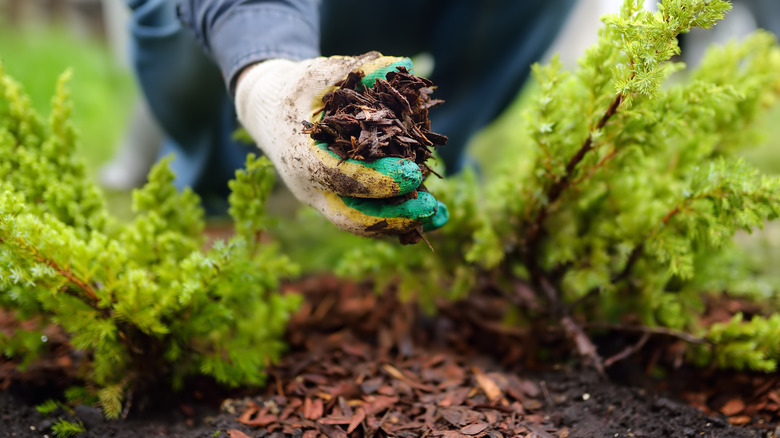As a gardener, it’s natural to assume that refreshing mulch in the spring is the best course of action. However, you may be surprised to learn that an ideal time for mulch rejuvenation is actually during the winter, specifically after the first hard frost. While this may seem counterintuitive, winter mulching is a highly effective method for maintaining the health and beauty of your garden.
Mulch is vital in gardening, offering many benefits. However, these advantages diminish as the mulch breaks down and becomes less effective. By refreshing the mulch in winter, you give your garden the best chance to thrive in the coming seasons. Winter mulching provides insulation to the soil, protecting plant roots from freezing temperatures and reducing the risk of frost damage. It also helps retain moisture during dry winter spells. By embracing this often-overlooked technique, you can ensure your garden beds remain stunning and vibrant throughout the year.
How to mulch in winter

Clean straw is an excellent option for winter mulching, as it provides insulation and retains moisture while allowing airflow. Shredded leaves make for a natural and readily available mulching material. They offer insulation and weed suppression and gradually break down to enrich the soil. Pine needles, meanwhile, are suitable for mulching acid-loving plants. Fine wood chips can be used for winter mulching, too, but avoid large chunks that might compact and suffocate the soil. A layer of well-aged compost helps enrich the soil and adds nutrients during the winter months.
To begin mulching, remove any debris, weeds, or diseased plants. Dampening the soil before mulching helps retain moisture throughout the winter. Spread a layer of mulch, around 2 to 4 inches thick, evenly over the garden bed. Avoid piling mulch against the stems or trunks of plants to prevent rot and pest problems. Check the moisture level of the soil periodically. Water if necessary, as winter winds can cause desiccation.
Mulching at the right time

The key to knowing when to mulch in the winter lies in monitoring weather conditions and observing your garden. Keep an eye out for the arrival of the first hard frost, typically characterized by a significant drop in temperature that freezes the ground and causes plants to enter dormancy. Once this occurs, it’s a good indication it’s time to proceed with winter mulching. Additionally, pay attention to the condition of your garden beds. If the existing mulch has significantly decomposed or appears thin, it’s a clear signal it’s time for a refresh. Inspect the soil moisture levels as well; if the soil feels dry, mulching can help retain essential moisture during the winter months.
Winter mulching is particularly beneficial in regions with harsh winters or freeze-thaw cycles, regulating soil temperature and preventing extreme temperature fluctuations that can damage plant roots. Mulch also helps retain moisture during the winter, reducing the risk of desiccation caused by windy and drying conditions. It can also prevent frost heaving, a phenomenon where repeated freezing and thawing of soil causes plants to be lifted out of the ground.



